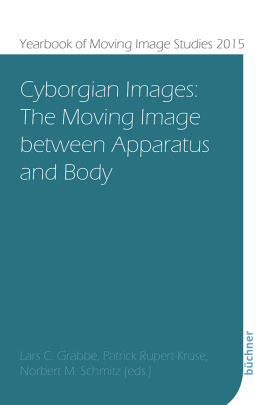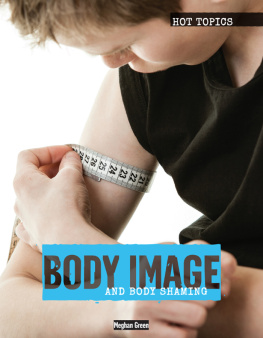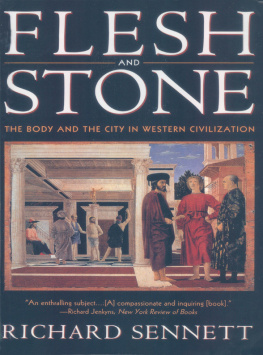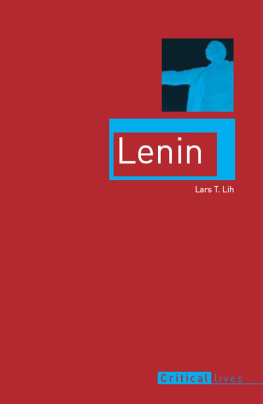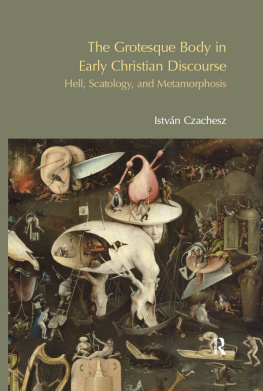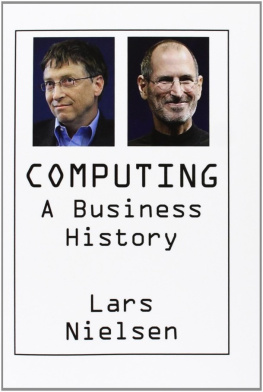Grabbe Lars Christian - Cyborgian images: the moving image between apparatus and body
Here you can read online Grabbe Lars Christian - Cyborgian images: the moving image between apparatus and body full text of the book (entire story) in english for free. Download pdf and epub, get meaning, cover and reviews about this ebook. City: Marburg;Germany, year: 2018;2015, publisher: Büchner Verlag, genre: Religion. Description of the work, (preface) as well as reviews are available. Best literature library LitArk.com created for fans of good reading and offers a wide selection of genres:
Romance novel
Science fiction
Adventure
Detective
Science
History
Home and family
Prose
Art
Politics
Computer
Non-fiction
Religion
Business
Children
Humor
Choose a favorite category and find really read worthwhile books. Enjoy immersion in the world of imagination, feel the emotions of the characters or learn something new for yourself, make an fascinating discovery.
- Book:Cyborgian images: the moving image between apparatus and body
- Author:
- Publisher:Büchner Verlag
- Genre:
- Year:2018;2015
- City:Marburg;Germany
- Rating:5 / 5
- Favourites:Add to favourites
- Your mark:
- 100
- 1
- 2
- 3
- 4
- 5
Cyborgian images: the moving image between apparatus and body: summary, description and annotation
We offer to read an annotation, description, summary or preface (depends on what the author of the book "Cyborgian images: the moving image between apparatus and body" wrote himself). If you haven't found the necessary information about the book — write in the comments, we will try to find it.
Cyborgian images: the moving image between apparatus and body — read online for free the complete book (whole text) full work
Below is the text of the book, divided by pages. System saving the place of the last page read, allows you to conveniently read the book "Cyborgian images: the moving image between apparatus and body" online for free, without having to search again every time where you left off. Put a bookmark, and you can go to the page where you finished reading at any time.
Font size:
Interval:
Bookmark:
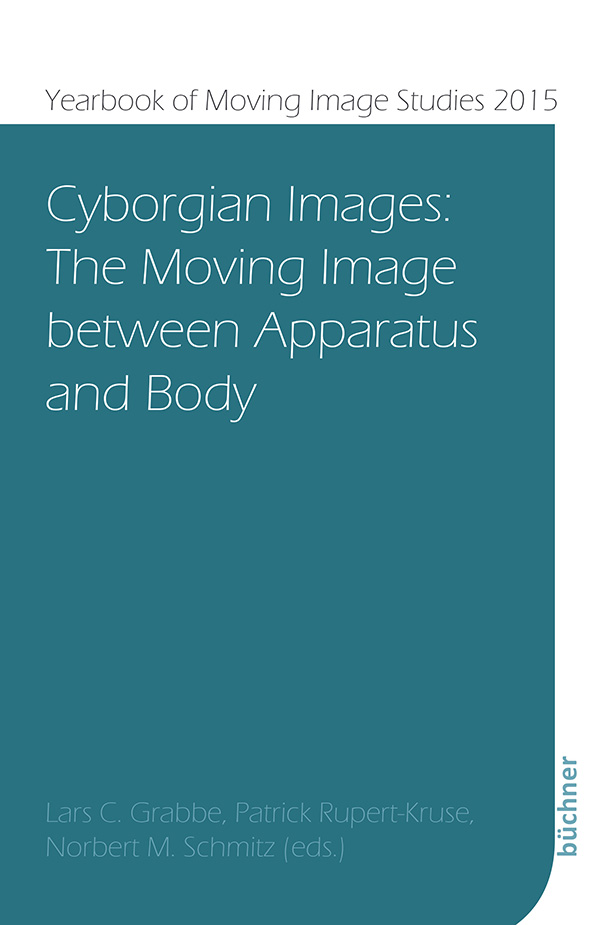
Lars C. Grabbe, Patrick Rupert-Kruse, Norbert M. Schmitz (eds.)
Yearbook of Moving Image Studies 2015
Cyborgian Images:
The Moving Image between Apparatus and Body
Bchner-Verlag
About the Yearbook of Moving Image Studies
The Yearbook of Moving Image Studies (YoMIS) reflects and discusses the academic, intellectual, and artistic dimensions of the moving image with an international perspective. The publication will be enriched by contributions from disciplines like media and film studies, image science, (film) philosophy, perception studies, art history, game studies, neuroaesthetics, phenomenology, semiotics and other research areas related to the moving image in general.
YoMIS is a double-blind peer-reviewed, interdisciplinary publication aimed at an international academic readership; and therefore an innovative quality publication with a high level of international expertise. It is supported by an interdisciplinary editorial board and will be published annually as epub and pdf.
YoMIS is a premium publication planned and managed by the founders and administration board of the Research Group Moving Image Science (www.movingimacescience.com).
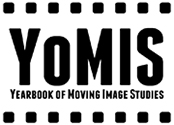
About this Volume
One of the big myths and metaphors of the postmodern age is the Cyborg, which includes a large amount of different meanings. The Cyborg often expresses the transformation and extension of the body and exemplifies a postmodern range of technical determinism and human comprehension. In this perspective the Cyborg is no longer a concept of science fiction, technical apocalypse or cyberpunk, but more a construct that highlights the relation of modern media technologies within our every day culture; as well as the body and mind of spectators and users of these media systems.
We are connected with a variety of poly-sensual media systems, and we use its potential for communication, multiplying knowledge, spatial and temporal orientation or aesthetic experience. Therefore we are a kind of Cyborgs, connected to media by complex multimodal interfaces.
This volume monitors and discusses the relation of postmodern humans and media technologies and therefore refers to Cyborgs, interfaces and apparatuses within the perspective of an autonomous image science.
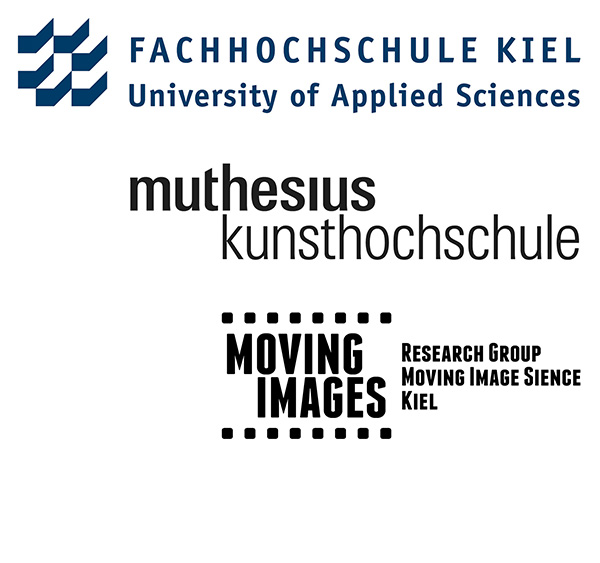
This publication is based on the special scientific cooperation of the University of Applied Sciences in Kiel and the Muthesius Academy of Fine Arts and Design in Kiel (Germany).
The idea of the international concept of the Yearbook of Moving Image Studies (YoMIS) was systematically developed by the editors Dr. Lars C. Grabbe, Prof. Dr. Patrick Rupert-Kruse and Prof. Dr. Norbert M. Schmitz.
A special thanks goes to the University of Applied Sciences in Kiel and the Muthesius Academy of Fine Arts and Design in Kiel for funding and support.
Finally the editors wish to thank the authors and the members of the editorial board for excellent work, global thinking and inspiration.
Lars C. Grabbe, Patrick Rupert-Kruse & Norbert M. Schmitz
August 2015
Lars C. Grabbe, Patrick Rupert-Kruse & Norbert M. Schmitz
The interdisciplinary perspective of an autonomous image science is not only influenced by the inflation and power of digital images, but also by the fact, that modern images are often moving images. The Yearbook of Moving Image Studies (YoMIS) wants to provide an international discussion forum for the representatives that are working on the topic of images and visual culture.
The basic idea of the Yearbook reaches back to 2011 and is closely connected with the founding of the Research Group Moving Image Science (RGMIS) in Kiel (Germany). Founded at the Christian-Albrechts-University as a doctoral seminar, the RGMIS worked on all topics of modern media theory, focussing on the essential role of the visual contents and structures of media in a multimodal context. The interdisciplinary research of the group includes media and film studies, image science, philosophy of media and mind, art history, aesthetics, game studies, theories of perception and psychology and other research areas related to the moving image. The academic engagement lead to a series of conferences termed Moving Images, which intend to discuss the static concept of images used in traditional image sciences (in terms of static pictures or images), in a modern perspective according to new media technologies and their moving images. The fundamental consideration of founding YoMIS is the connection of German, European and international research to improve the academic exchange of ideas. Therefore YoMIS is conducted as electronic publication to enhance the range of impact and to facilitate the production process. The Yearbook is based on an extraordinary scientific cooperation of the University of Applied Sciences Kiel and the Muthesius Academy of Fine Arts and Design in Kiel and is published by Dr. Lars C. Grabbe, Prof. Dr. Patrick Rupert-Kruse and Prof. Dr. Norbert M. Schmitz.
The first issue of the double-blind peer-reviewed Yearbook explores Cyborgian Images: The Moving Image between Apparatus and Body . The focus lies on modern and interdisciplinary perspectives on the structure of moving images. Modern images (movies, TV, displays etc.) are often depending on multifaceted media systems and poly-sensual apparatuses, which exemplify multimodal and intermodal mechanisms. These multimodal media systems interact in specific ways with the sensory system of the recipient and generate various levels of perceptual states with different intensities of comprehension and bodily experience. In this perspective neither media systems (systems of the moving image) nor the subjective states of reception are passive processes: it is instead a highly interactive and inter-systemic media relation.
Movement, temporal dynamics, spatiality and additional modalities (speech, sound, music, colour, font, scripture, texture etc.) interact with the sense modalities, memories and process of mental anticipation and create a complex and hybrid structure of medium, recipient and sensory stimulus processing. This refers to the fact, that on the one hand the technological structure of displays and interfaces are relevant, and that on the other hand the role of the lived-body and mind is crucial for an understanding of the effects of the moving image. It is the interaction of image, apparatus and recipient that activates the images and their specific pictorial (and often multimodal) representation and unfolds its semantic and semiotic content. This remarks are clear in the context of proto-cinematographic art and cinematographic apparatuses but become more obvious in the context of recent evolution in media technologies and digital art: new displays, interfaces and poly-sensual media systems like Oculus Rift (OculusVR), Kinect (Microsoft), Second Life (Linden Lab) or Aireal and 3D Tactile Rendering (Disney) promote the progressive embodiment of the recipient or user, and, in doing so, they force the amalgamation of the recipient with the materiality and content of moving images.
Therefore Cyborgian Images addresses the broad field of the relationship between the technological dimension of the medium, its aesthetic and structural impact on the representational or mental status of the moving image and the effect on the body of the recipient, including affective and somatic reactions. With the term Cyborg we want to address the feedback processes between the recipient and the medium as technology as well as content or image. Additionally we want to shine a light on the fusion of mind, body and media, on extension through and incorporation of images, and how this melting affects our bodily reactions and mental processes. So, the concept of the Cyborg in connection to the concept of modern images increases the range of analytical data and, hopefully, will compile a useful interdisciplinary focus of modern moving image studies.
Font size:
Interval:
Bookmark:
Similar books «Cyborgian images: the moving image between apparatus and body»
Look at similar books to Cyborgian images: the moving image between apparatus and body. We have selected literature similar in name and meaning in the hope of providing readers with more options to find new, interesting, not yet read works.
Discussion, reviews of the book Cyborgian images: the moving image between apparatus and body and just readers' own opinions. Leave your comments, write what you think about the work, its meaning or the main characters. Specify what exactly you liked and what you didn't like, and why you think so.

